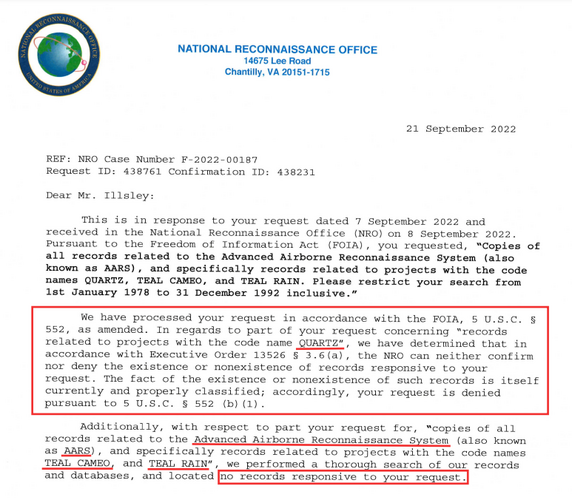BAROBA said:
seruriermarshal said:
BIG SAFARI had their finger in the pie too ?
What or who is Big Safari?
From R-2 Exhibit for PE 0305207F COBRA BALL May 2009:
"These activities are managed by the Air Force through the 645th Aeronautical System Group (645th AESG, a.k.a. BIG SAFARI Program Office), 303rd
Reconnaissance System Wing, Aeronautical Systems Center, Air Force Materiel Command, Wright Patterson AFB, OH. BIG SAFARI manages engineering, ground
and support system modifications, integration, flight testing, product assurance, acceptance testing, logistics, and training activities."
"The world-wide challenge of keeping pace against technologically agile targets used by both nation and non-nation-state adversaries and the rapid evolution of COTS
technologies demands a responsive and adaptive acquisition strategy for fielding 'baseline capabilities' that are logistically supportable at all locations. The BIG
SAFARI program office uses an incremental 'baseline' strategy to mitigate risk, find affordable solutions and field needed capabilities. Obsolescence and diminishing
manufacturing sources (DMS) are addressed with each baseline upgrade as well as annually as part of the sustainment responsibilities. Activities also include studies
and analysis to support both current program planning and execution and future program planning."
And from R-2 Exhibit PE 0305221F: Network Centric Collaborative Targeting Feb 2010:
"The NCCT capability is maintained and baseline / incremental upgrades plus any quick reaction capabilities (QRC) developments are acquired through the 645th
Aeronautical System Group (BIG SAFARI Program Office) in accordance with the BIG SAFARI Program Management Directive (PMD) and the BIG SAFARI Class
Justification and Approval (J&A) document for acquisition of supplies and services using other than full and open competition criteria. The supplies and services
procured by the 645th AESG under their J&A to satisfy National Security (FAR 6.302-6) or Unusual and Compelling Urgency (FAR 6.302-2) requirements are supported
by the BIG SAFARI Life Cycle Management Plan (LCMP) across the full spectrum of system life cycle management from developmental engineering to system
retirement ("craddle to grave" support). Due to the rapidly changing threat environment encountered during our prolonged commitment to Overseas Contingency
Operations (OCO), the acquisition program manager has the authority to redirect funding as necessary to meet current stated and emerging Combatant Commander
requirements.
645th Aeronautical Systems Group (645 AESG) at Wright Patterson AFB OH, manages the Cost Plus Fixed Fee contract used to develop the NCCT Core Technology.
645th AESG will provide NCCT software and common hardware to systems and platforms designated to field this ISR capability. Individual program management
offices may contract directly with their prime contractors or through the 645th AESG for integration of this ISR capability on their respective systems and platforms"
Think of BIG SAFARI as a super duper management/procurement office. There is another, similar management organization that handles the programs of the classified flight test squadron at Groom Lake.








